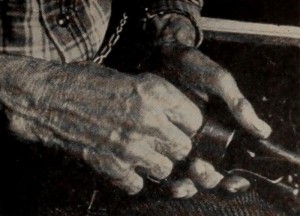
"A western, in color, about a drifter looking for work and then falling in love with his employer’s granddaughter." Church History Library.
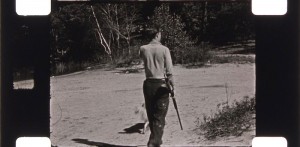
"Hunting, cast of "Boy," played by Winthrop Rolfe, and "Dog," played by Teddy. Boy, walks with Dog through the forested mountainside, gazes at views over the alley, drinks water from a rushing stream, and kneels to shoot at birds." Notes by (NHF) Chris Reed and Chris Castiglia, June 2013

"Kendall T. Greenwood, who has proved his competence in a number of detailed industrial records, turns with Incident from Life to the ways of a growing lad and achieves a clear and carefully observed record of his own youngster that will, in years to come, testify to the fact that his father took the boy seriously. Mr. Greenwood's picture is a compliment to his son and, as we think it over, an unintentional compliment to an understanding father as well. Young Greenwood is a reader. In the course of his reading, he comes upon the subject of diving, but he does not let the matter rest there. Paralleling the "spool and old coal hod" of another inventor, he contrives, out of the detritus of a trash heap and a cautious borrowing from Dad's camping outfit, a diving bell that works so successfully that he goes down with it into a lake near the family home. Father maintains an almost incredible calm and communicates some of it to his wife, although Mrs. Greenwood's face is a study, when the boy's young helper fouls the airline and has to be assisted by Mr. Greenwood. But all ends well, as an absorbing and well made picture comes to a close. Director, actor and cameraman (although Mrs. Greenwood must have lent needed aid), Mr. Greenwood has made a family film that is dignified and interesting and, above all, is one that Junior need not shrink from, as it is shown in later years." Movie Makers, Dec. 1942, 506.
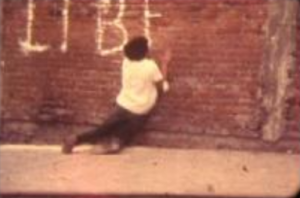
"El relato iniciaba con la presentación de un grupo de jóvenes que corren de manera desesperada por las calles de la ciudad, presumiblemente perseguidos por la policía. Inexplicablemente, dada la urgencia de la huída, uno se detiene a escribir en una barda la palabra "Libertad". No lo consigue, porque una bala lo derrumba cuando apenas va en "Libe...". (de ahí el título de la película). [...] La película apenas muestra una esperanza posible en la lucha por la libertad. Después del acoso y el acecho, todos los jóvenes que han protagonizado la historia mueren por una bala anónima de una fuerza represiva que no alcanza a tener un rostro definido" (Vázquez Mantecón, 2012).
"The story began with the presentation of a group of young people that run desperately throughout the city streets, presumably they are being chased by the police. Inexplicably, given the urgency of the escape, one of them stops to write the word "Freedom" on a wall. He fails, because a bullet overthrows him when he has barely written "Freed.." (hence the title of the film). [...] The film barely shows hope for the struggle for freedom. After the harassment and the siege, all the young people that starred the film are murdered by an anonymous bullet of a repressive force that does not have a defined face" (Vázquez Mantecón, 2012).
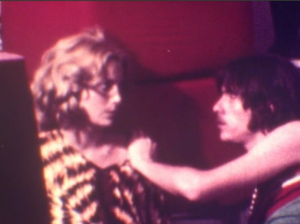
"Luz externa fue una de las producciones más ambiciosas del súper 8 mexicano. El guión se basaba en el monólogo de Ernesto, un machín jipiteca, que relata a un amigo las peripecias con su novia Raquel. Posteriormente el guión sirvió como la base del cuento con el mismo título que apareció como parte del libro El rey se acerca a su templo. Tanto la película como el cuento se abocaban a describir el abanico amplio de la juventud clasemediera urbana contracultural que había aparecido a fines de los años sesenta y principios de los setenta: los macizos que acceden al consumo de drogas, las muchachas de buena familia que se acercan a ese mundo, los nuevos conversos a la revolución social o los intelectuales que participan del ambiente con simpatía" (Vázquez Mantecón, 2012).
"Luz externa [External light] was one of the most ambitious productions of the Mexican super 8. The script was based in the monologue of Ernesto, a 'machin' hippie, that tells a friend about his adventures with his girlfriend Raquel. The script served later as the base for a short story with the same title that appeared as part of the book El rey se acerca a su templo [The king approaches his temple]. Both the movie and the short story described the wide range of the middle class urban countercultural youth that emerged at the end of the sixties and the beginning of the seventies: the strong men that had access to drugs, the girls from good families that entered that world, the new converts to social revolution or the intellectuals that sympathize with that ambiance" (Vázquez Mantecón, 2012).
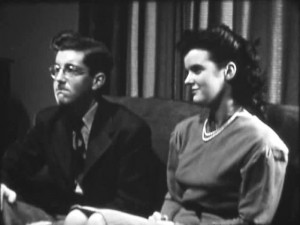
At home in the evening, a sophisticated young woman entertains an awkward male friend of her brother. They make small talk and dance to records -- but the boy's social anxiety overwhelms him, and he disappears in a puff of her cigarette smoke. (D.J. Duffy)
"'Overdose,' filmed by Francis J. Barrett, of Seattle, Washington, is an expertly photographed dramatic photoplaylet, done in 8mm. black and white. The story concerns two young men sharing a room together. One, a writer is upset by annoying tactics of other who, sensing this, plans to put his friend out of his misery. He brings him a cup of coffee to which he has added sleeping tablets. A fight ensues and the other strikes his benefactor down with an ashtray. It is then he discovers the sleeping pills are not fatal. The plot is simple, but the acting is expert, and complemented by the dramatic low-key lighting and highly effective camera handling, presents a very professional bit of cinematic artistry. Barrett used a Bell & Howell 8mm. 'Sportster' camera and Ansco Hypan film." American Cinematographer, Apr. 1950, 134.
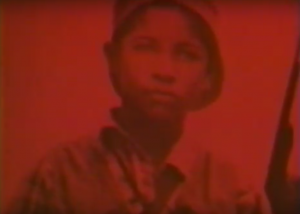
"En Patria Libre, Sergio García documentó los primeros logros de la revolución sandinista en Nicaragua. [...] Se trataba de un documental convencional, con una voz off (leída por Felio Eliel) sobre un momento de frescura y esperanza por el triunfo del Frente Sandinista de Liberación Nacional. El arranque del documental con una serie de imágenes de Sandino en alto contraste que culminan en la foto de un adolescente guerrillero (mientras que en la banda sonora se escucha a Pablo Milanés cantar "Los caminos") preludian el tono que se desarrollará sobre el caso de la revolución sandinista" (Vázquez Mantecón, 2012.)
"In Patria Libre [Free Country], Sergio García documented the first achievements of the Sandinista Revolution in Nicaragua. It was a conventional documentary, with an off voice (read by Felio Eliel) about a moment of freshness and hope because of the triumph of the Sandinista National Liberation Front. The documentary begins with a series of highly contrasted images of Sandino that end with the picture of a guerrilla teenager (while the soundtrack plays "Los caminos" [The roads] by Pablo Milanés), which is a prelude to the tone that will be used to describe the Sandinista Revolution" (Vázquez Mantecón, 2012).
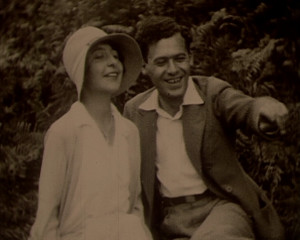
"A group of upper-middle class young men (dressed in shirts and ties, one in a striped blazer) sit on the grass. They are idle and bored and missing women. An intertitle states that `there is not a bird in sight'. A group of young women from the Amena Stich private school, led by their bespectacled female teacher, is walking out for exercise. The men see them and life looks better. They hide behind a hedge as the women pass by. The young women stray on a side path leaving their teacher to walk on alone. She eventually notices her young ladies are not behind her and goes to look for them. Meantime the men and women have met up and all sit around on the grass, the women being chatted up. Professor Stephen Chickwood is in the woods looking for insects. He meets the teacher and offers help to find her girls. They form a relationship and walk hand in hand. Eventually they come upon the young men and women who laugh and point at them. Amena shouts `Help'" (EAFA Database).
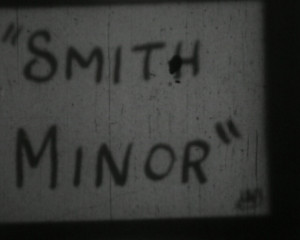
"Amateur filmmaker, cinema historian and railway engineer H.A.V. Bulleid presents a tale of brotherly rivalry. When Smith Minor - 'so little, he was lost in an Austin Seven' - is bullied by his older brother, Smith Major - 'so tough he slept on tin-tacks' - he is resolved to get revenge, once and for all. Employing the help of a friend and mutual enemy, he hatches a plan of vengeance, plotting to 'heave him over the quarry'. An altercation between two boys is followed by the introduction of Studious Stevens, 'so classical he couldn't fathom science'’ (EAFA Database)" [NOTE – EAFA database suggests this is an incomplete film].
Total Pages: 4